Masago sushi is a popular sushi made with smelt roe from the Capelin fish. Masago is often used to coat the outside sushi rolls and make fillings. It is commonly seen in orange, green, or red colors but has a pale-yellow color.
Masago has a unique taste and texture that many sushi enthusiasts enjoy. It is softer than tobiko and has a slightly sweet, briny, and citrusy quality. Masago is often used as an ingredient in sushi and is often dyed to add visual interest to dishes. It is also enjoyed worldwide for its versatility and powerful health profile.
Key Takeaways
- Masago sushi is made with smelt roe from the Capelin fish.
- Masago has a unique taste and texture that many sushi enthusiasts enjoy.
- Masago is often used in sushi and is enjoyed worldwide for its versatility and powerful health profile.
What is Masago
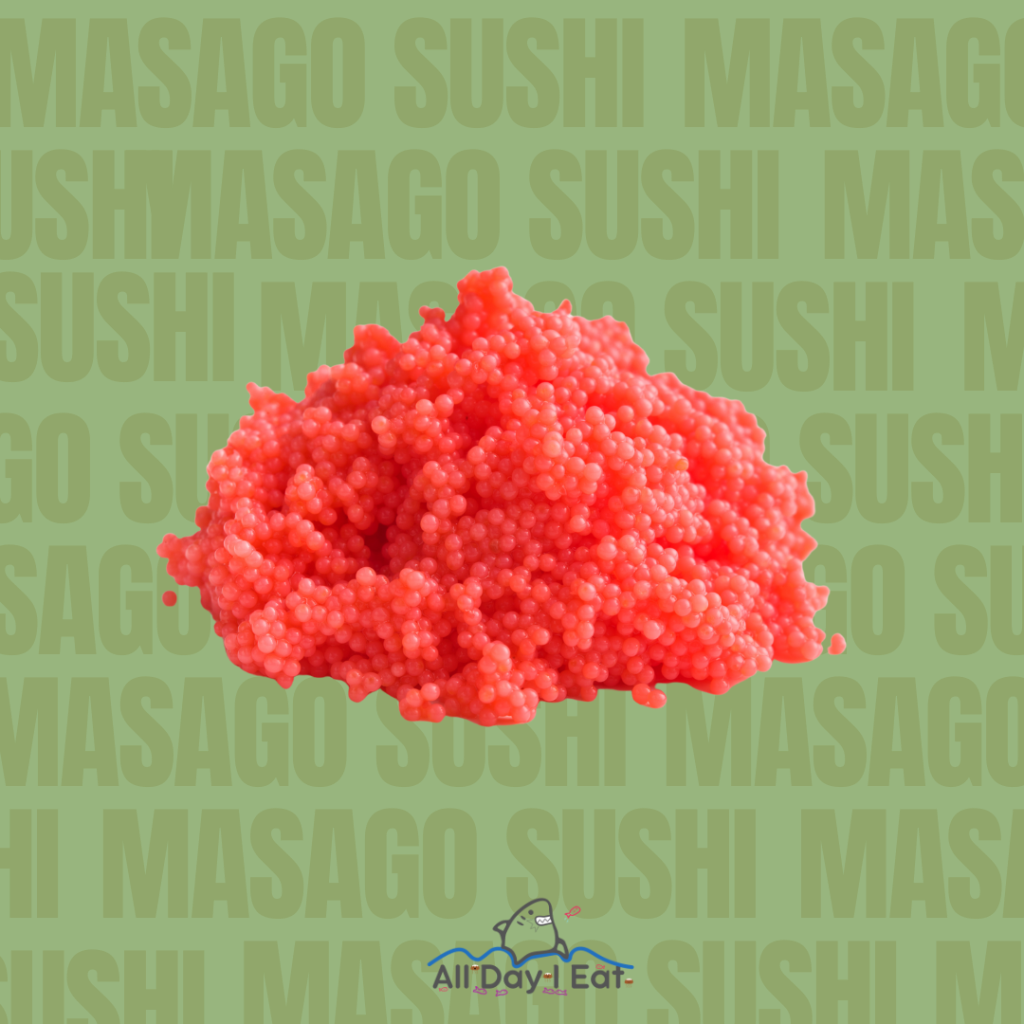
Masago is a type of fish roe often used in sushi rolls. It is made from the fully-ripened eggs of the capelin fish, a small forage fish native to the North Atlantic, North Pacific, and Arctic oceans. Capelin fish are an essential part of the food chain in cold water environments, serving as prey for larger predators like the Atlantic cod. The eggs of the capelin fish are harvested and processed to make masago which are the small beads used as a garnish or filling in sushi rolls and various Japanese dishes.
Masago is often dyed orange to give it a more vibrant color. The orange color also helps to distinguish it from other types of fish roe, like tobiko, which is often dyed red or black. Masago has a slightly crunchy texture and a mild, sweet flavor that pairs well with other seafood flavors.
Masago is a popular ingredient in Japanese cuisine because of its unique taste and texture. It is often used as a garnish or filling in sushi rolls but can also be used in other dishes like salads or as a topping for rice bowls.
What is Sushi
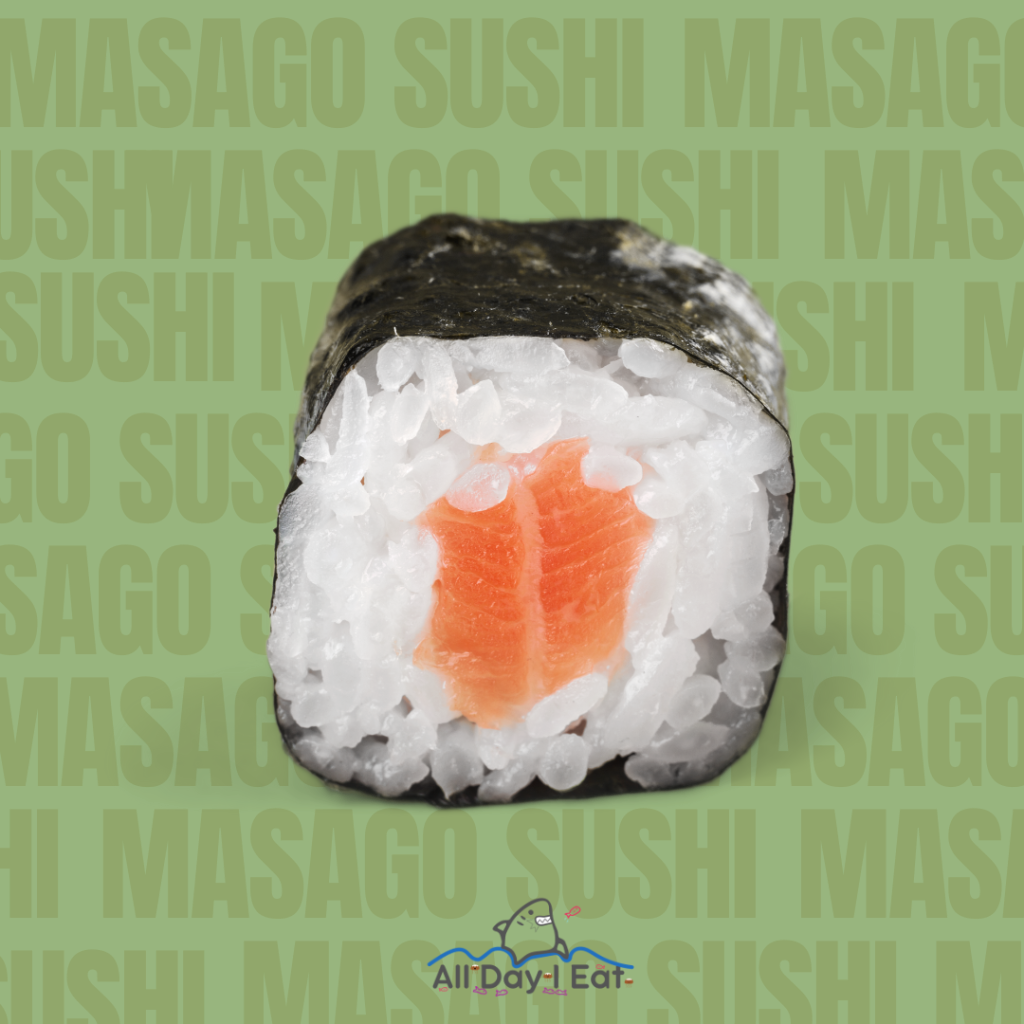
Sushi is a traditional Japanese dish that is enjoyed all over the world. It typically consists of vinegared rice, fresh seafood, and vegetables. Sushi can be served in various forms, including nigiri, maki sushi, and hand rolls. It is often enjoyed with soy sauce, wasabi, and pickled ginger.
The key ingredient in sushi is the rice. Sushi rice is short-grain rice cooked with vinegar, sugar, and salt. This gives the rice a sticky texture and a slightly sweet and sour flavor. The rice is usually wrapped in nori, a dried seaweed. Nori adds a salty flavor and a crisp texture to the sushi.
Nigiri is a type of sushi consisting of a small ball of rice topped with fresh seafood. The seafood, including tuna, salmon, shrimp, and eel, can be raw or cooked. Nigiri is often served with wasabi, a spicy green paste made from horseradish.
Maki sushi, also known as sushi rolls, is made by rolling sushi rice and various fillings in nori. Popular types of maki sushi include California rolls, which typically include crab meat, avocado, and cucumber, and Boston rolls, which often include shrimp and cucumber.
Masago Sushi
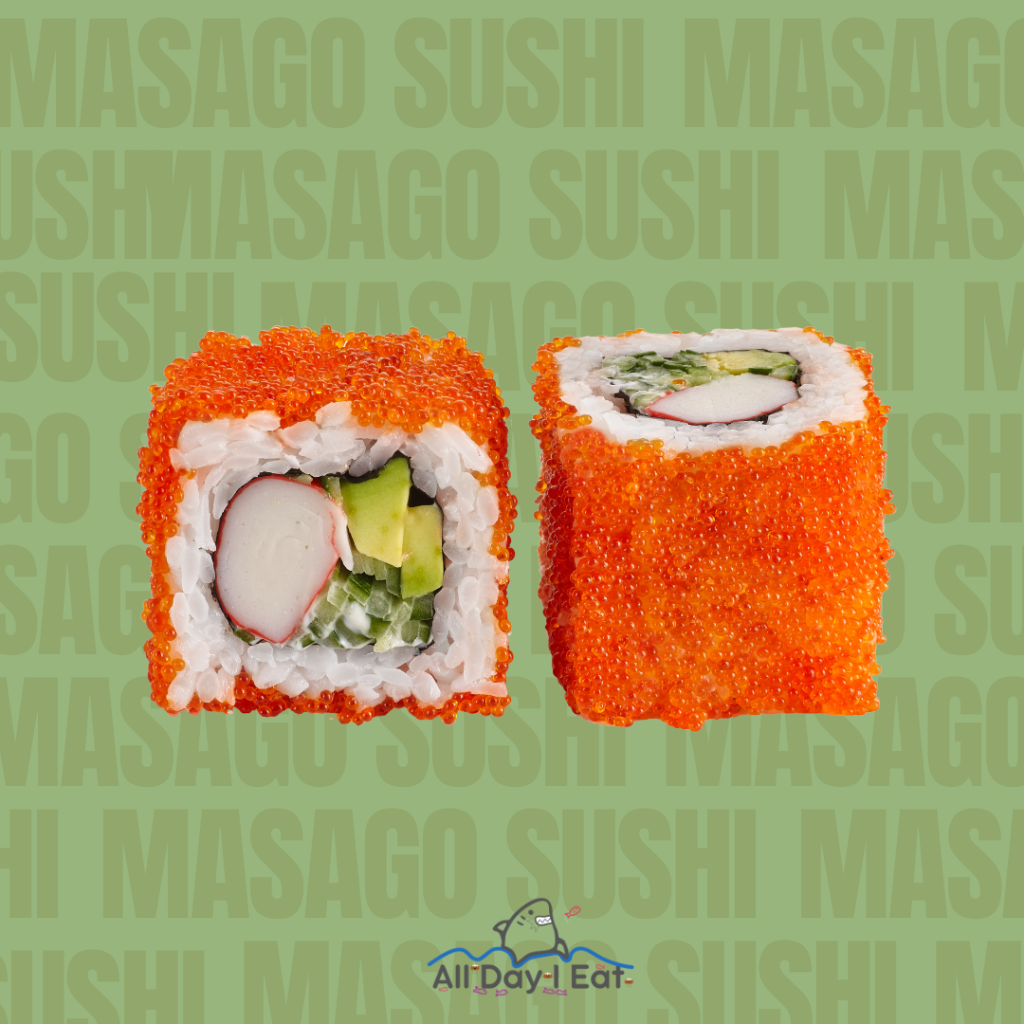
When making sushi rolls, masago is typically sprinkled on the rice or mixed in with the filling. The roe adds texture and flavor to the sushi roll, making it more exciting and enjoyable.
It is important to note that masago is not the same as tobiko, which is another type of fish roe commonly used in sushi. While both types of roe are small and crunchy, tobiko has a slightly stronger flavor and is usually more expensive than masago.
Masago’s mild flavor and crunchy texture make it a great addition to any sushi roll, especially California rolls.
Flavor and Texture of Masago

Masago has a distinct flavor and texture that sets it apart from other types of roe.
The flavor of masago is briny and salty, with a subtle fishy taste. It has a high sodium content, which is noticeable when tasted. Additionally, it has a slightly bitter taste that balances well with the other flavors in sushi dishes.
One of the unique characteristics of masago is its crunchy texture. It provides a satisfying crunch when eaten, which is why it is a popular ingredient in sushi rolls. The texture is grainy and slightly sandy, which adds to the overall experience of eating sushi with masago.
When pairing masago with other flavors, it goes well with vegetables, rice, and various types of seafood. Its briny flavor and crunchy texture contrast the softness of sushi rice and the firmness of other seafood.
Color Variations of Masago
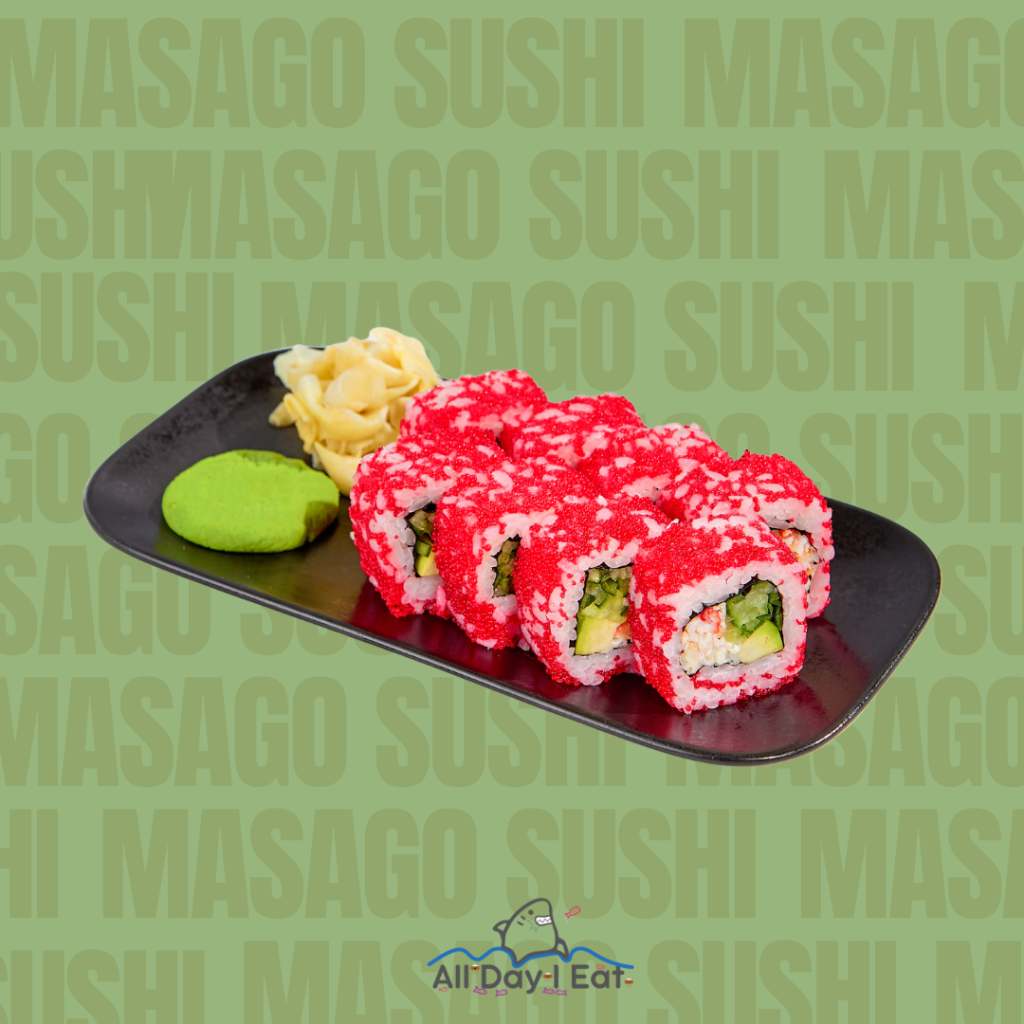
Masago has several color variations, including red, orange, black, and pale yellow. The color of masago can vary based on the type of fish it comes from and any added dyes or flavorings.
Red Masago
Red masago is a popular masago variation often used as a garnish on sushi rolls. It is typically made by dyeing the eggs with red food coloring. The bright red color adds a pop of color to sushi rolls and can make them look more visually appealing.
Orange Masago
Orange masago is another popular masago variation commonly used in sushi. It is bright orange and is often used as a topping on sushi rolls. Like red masago, it is typically dyed to achieve its vibrant color.
Black Masago
Black masago is a less common masago variation often used in sushi. It is dark, almost black, and typically made by dyeing the eggs with black food coloring. It has a slightly different flavor profile than other types of masago and can add a unique twist to sushi rolls.
Pale Yellow Masago
Pale yellow masago is a less common variation of masago with a light, almost translucent color. It is typically made using undyed eggs and has a mild, slightly sweet flavor. It is often used as a garnish on sushi rolls and can add a subtle pop of color without overpowering the other flavors in the dish.
Overall, the color of masago can vary based on a variety of factors, including the type of fish it comes from and any added dyes or flavorings. However, regardless of color, masago is a delicious and versatile ingredient that can add a unique twist to any sushi dish.
Nutritional Profile of Masago

Masago is a popular ingredient in sushi rolls that offer a variety of nutrients in a small serving size. Here’s a breakdown of the nutritional profile of masago per 1 oz (28g) serving:
- Calories: 40
- Protein: 4g
- Fat: 1g
- Sodium: 150mg
- Omega-3: 200mg
- Vitamin B12: 1.2mcg
- Selenium: 8mcg
- Carbohydrates: 1g
- Sugar: 0g
- Calcium: 10mg
Masago is an excellent source of protein and omega-3 fatty acids. It also contains essential vitamins and minerals like vitamin B12 and selenium. Also, masago is low in calories and carbohydrates, making it suitable for people watching their weight or managing their blood sugar levels.
The omega-3 fatty acids in masago are essential for heart health, brain function, and inflammation reduction. Vitamin B12 is crucial for healthy nerve function, DNA synthesis, and the production of red blood cells. Selenium is an antioxidant that supports thyroid function and helps protect against oxidative damage.
One serving of masago provides approximately 4g of protein, making it a great addition to a balanced diet. Protein is essential for building and repairing tissues in the body and helps keep you full and satisfied after a meal.
Overall, masago is a nutrient-dense food that can be a healthy addition to your diet. However, it’s important to note that masago is also relatively high in sodium, so it should be consumed in moderation as part of a balanced diet.
Health Benefits and Risks

Masago sushi is a delicious and popular dish served in many Japanese restaurants. It is made from the roe of capelin, a small fish, and is often used as a topping for sushi rolls. Here are some health benefits and risks of eating masago sushi.
Health Benefits
- Good source of protein: Masago is an excellent source of protein, with each serving providing around 4 grams of protein. Protein is essential for building and repairing tissues in the body and helps keep you feeling full and satisfied.
- Rich in healthy fats: Masago is rich in healthy fats, including omega-3 fatty acids. These fats are good for your heart and can help to reduce inflammation in the body. They may also help to improve brain function and reduce the risk of certain diseases.
- Low in mercury: Unlike some types of fish, masago is low in mercury content. This makes it a safer option for pregnant women and children.
- Good for your immune system: Masago contains selenium, an essential mineral for a healthy immune system. It also contains vitamin B12, essential for producing red blood cells.
Risks
- Allergic reactions: Some people may be allergic to seafood, including masago. If you have a seafood allergy, it is best to avoid masago sushi.
- High sodium content: Masago sushi can be high in sodium, which can be a problem for people trying to reduce their sodium intake. If you are concerned about your sodium intake, limiting your consumption of masago sushi is best.
- Weight gain: Masago sushi is a high-calorie food and can contribute to weight gain if consumed in large amounts. It is important to enjoy masago sushi in moderation as part of a balanced diet.
- Hormonal effects: Some studies have suggested that consuming large amounts of fish roe, including masago, may have hormonal effects on the body. However, more research is needed to understand these effects fully.
Masago sushi can be a healthy and delicious addition to your diet when consumed in moderation. It is a good protein and healthy fat source and is low in mercury. However, it is important to be aware of the risks of masago sushi, including its high sodium content and potential hormonal effects. You should speak with your healthcare provider if you have concerns about masago sushi.
Masago vs. Other Types of Roe

Regarding sushi, many types of roe can be used as toppings or fillings. Masago is just one of them. Here, we’ll look at how masago compares to other types of roe, including tobiko, salmon roe, and caviar.
Tobiko
Tobiko is another type of roe that is often used in sushi. It is made from the eggs of flying fish, which are small and crunchy. Tobiko eggs are typically smaller than masago eggs and have a brighter color, ranging from orange to red. Tobiko also has a slightly sweeter flavor compared to masago.
Salmon Roe
Salmon roe, also known as ikura, is another popular type used in sushi. It is made from the eggs of salmon and has a larger size compared to masago and tobiko. Salmon roe has a distinct orange color and a slightly salty taste. It also has a softer texture than the crunchy texture of masago and tobiko.
Caviar
Caviar is a type of roe that is often associated with luxury. It is made from sturgeon eggs and is typically much more expensive than masago, tobiko, or salmon roe. Caviar has a distinct flavor that is often described as buttery and salty. It also has a much softer texture compared to masago and tobiko.
How is Masago Used

One common way to use masago is as a topping for sushi rolls. It is often sprinkled on top of the rice or used to coat the outside of the roll. Masago can also be mixed with other ingredients to create a unique flavor profile. For example, it can be mixed with mayonnaise and sriracha to create a spicy masago sauce perfect for dipping sushi rolls or other appetizers.
In addition to sushi, masago can be used as a garnish for other dishes. Its bright color and small size make it a great addition to salads, soups, and other vegetable-based dishes. It can be sprinkled on top of the dish to add flavor and texture.
Overall, masago is a versatile ingredient that can be used in various ways. Whether you are looking for a garnish for your sushi rolls or a topping for your salad, masago is a great option that will surely add flavor and visual appeal to your dish.
Storage and Preparation of Masago
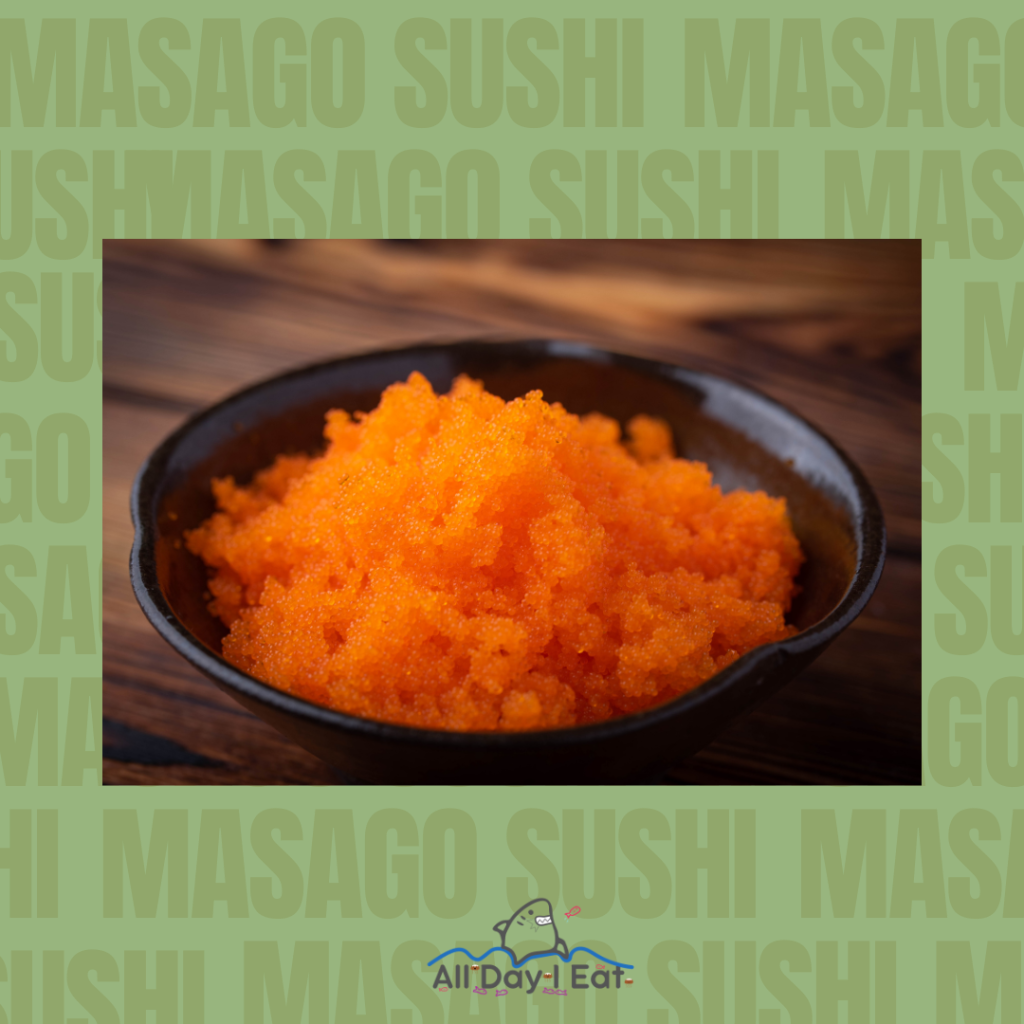
Masago is a perishable ingredient that needs to be stored properly to maintain its freshness. Here are some tips on how to store and prepare Masago:
Storage
- Masago should be stored in an airtight container in the refrigerator.
- Consuming Masago within 2-3 days after opening the package is best.
- If you have leftover Masago, you can freeze it for later use. Place the Masago in a freezer-safe container and store it in the freezer for up to 3 months.
Preparation
- Before using Masago, rinse it thoroughly with cold water to remove any excess salt or dye.
- You can add Masago to various sushi rolls, such as California rolls or spicy tuna rolls, to give them a crunchy texture and a burst of flavor.
- Masago can also be used as a garnish for other seafood dishes, such as ceviche or poke bowls.

Konnichiwa! (Hello!) I'm Pat Tokuyama, a Japanese tofu cookbook author, who travels for music, food, and adventure. If you like Japanese tea, checkout some of the newestorganic japanese tea, matcha bowls and noren and more!
** Curious about the Plant Based Japanese Cooking Club? ** Learn more here!
Cured Masago
Cured Masago is a popular variation of Masago with a longer shelf life. It is made by adding salt and soy sauce to the Masago and allowing it to cure for several days.
- Cured Masago can be stored in an airtight container in the refrigerator for up to 2 weeks.
- To prepare Cured Masago, rinse it with cold water and pat it dry with a paper towel before using it in your dishes.
Following these storage and preparation tips, you can enjoy fresh and flavorful Masago in your sushi and other seafood dishes.
Environmental Impact of Masago Consumption
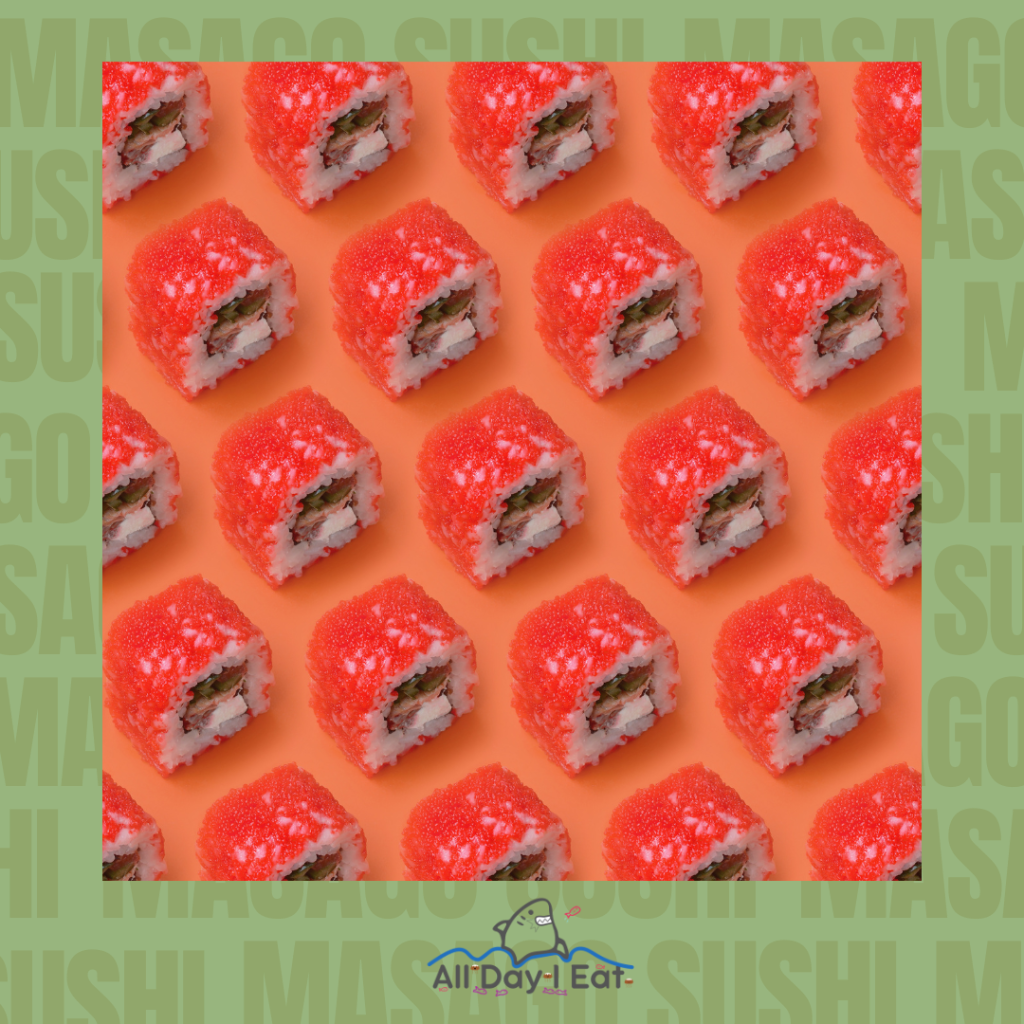
The production of masago, a popular sushi ingredient, significantly impacts the environment. Here are a few key points to consider:
- Fishing practices: Masago is harvested from capelin, a type of forage fish found in the North Atlantic, North Pacific, and Arctic oceans. Capelin are a vital food source for larger predators like the Atlantic cod. Overfishing of capelin can have a ripple effect on the entire marine ecosystem, leading to declines in other species that rely on capelin for food.
- Bycatch: Capelin fishing can also result in significant bycatch, which refers to the unintentional capture of non-target species. Bycatch can include vulnerable species like seabirds, marine mammals, and sea turtles, which can become entangled in fishing gear or drown in fishing nets.
- Waste: The production of masago can also generate significant waste. Capelin roe is typically cured with salt and sugar, which can result in high levels of wastewater and solid waste. In addition, the dye used to color masago can harm the environment if not correctly disposed of.
Overall, the production of masago has a significant impact on the marine environment. Consumers can help reduce this impact by choosing sustainably sourced seafood options and supporting fisheries that use responsible fishing practices.


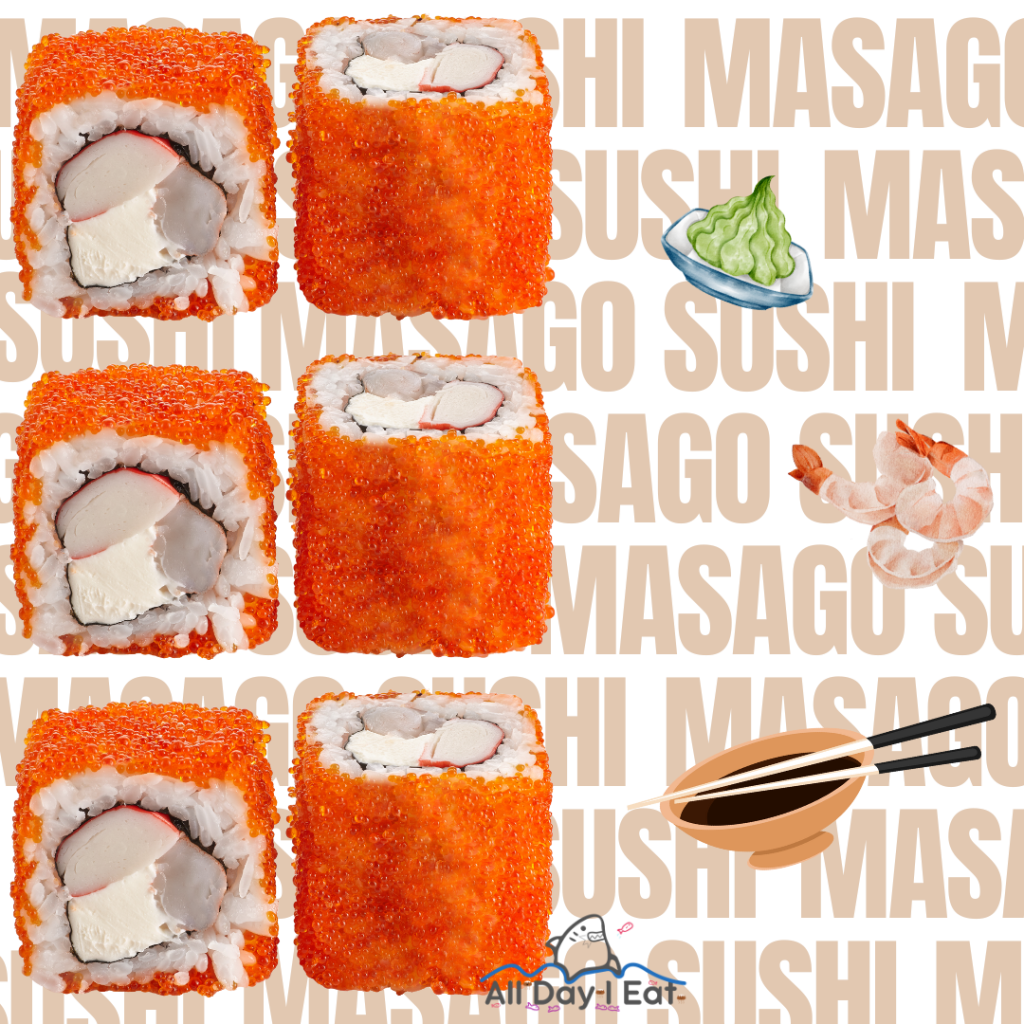


Konnichiwa! (Hello!) I'm Pat Tokuyama, a Japanese tofu cookbook author, who travels for music, food, and adventure. If you like Japanese tea, checkout some of the newestorganic japanese tea, matcha bowls and noren and more!
** Curious about the Plant Based Japanese Cooking Club? ** Learn more here!